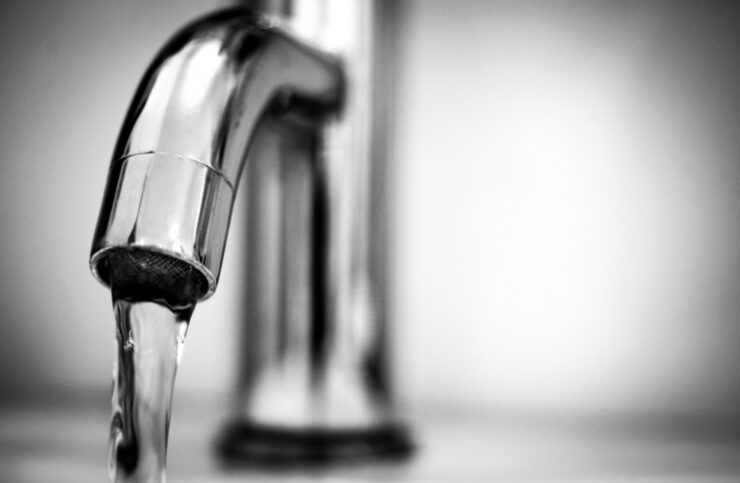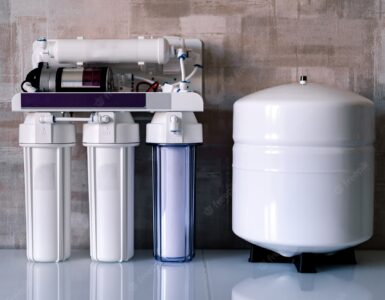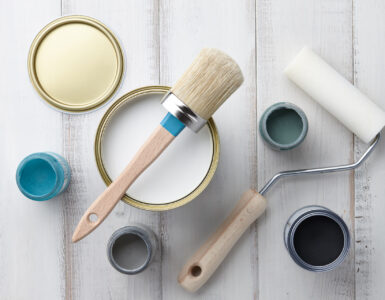Most people never consider that they may be receiving their water from lead pipes. And yet, an estimated 8.9 million homes in the UK likely have lead supply lines delivering their water! This can be scary to learn, but don’t worry, because there are different ways to learn whether or not your home has lead pipes.
There are several different ways to rule out lead pipes. First, let us learn why you should be concerned about the possibility of having lead pipes – they’re not healthy for you! Secondly, we will discuss all the different ways of testing for lead pipes.
Keep reading to learn everything you need to know about lead pipes.
The Dangers of Lead Pipes
Lead pipes can be a source of lead poisoning in both adults and children. However, lead pipes themselves are not inherently dangerous if they are in good condition. What causes lead pipes to become dangerous actually depends on the type of water running through them.
Water that has high acidity or a high concentration of minerals will corrode the pipes over time. It is this corrosion that results in the lead being released and mixed into the water that comes out of your tap. While you may not want to have lead pipes in your home anyway, a simple water test will be able to determine if your water poses a problem to the lead pipes you may have.
However, pipes are not the only source of lead that could be in your home. Even if you know your pipes are fine, if your water is acidic or high in minerals, it could affect any other area the water passes through that may have lead. This could be faucets or other pipes besides the service line.
What Is Lead Poisoning?
If you do have acidic water and lead pipes, then your risk for lead poisoning is high. You may not notice it at first, as it can take several months to build up in your system. Children are the most vulnerable, and symptoms may not appear until dangerous levels of lead have accumulated in the body.
Symptoms are often subtle and of a neurobehavioral nature. Permanent damage to the brain and nervous system can be a result of lead poisoning, so it is very important to determine the situation in your home.
Hard Water
In general, acidic water or water that is high in minerals is not good for the longevity and efficiency of pipes and many appliances. This is because the minerals can cause build-up over time that leads to inefficiency. Additionally, this hard water (high in minerals) can also cause unsightly spots on your glasses and it can affect the taste of drinks like tea and coffee.
If you are already having your pipe situation remedied, it might be a good idea to look into improving your water as well. While hard water is not unhealthy in most situations, it may not be desirable and there are various fixes you can make to improve the situation. Check out these handy DIY tips!
How to Know If You Have Lead Pipes in Your Home
There are several different ways to learn whether or not you have lead pipes in your home. Let us take a look at the different methods you can use.
Determine Through Age
Depending on where you are in the world, lead pipes may have been banned for use in construction.
If your home was built after the ban, then you can rest assured that your home does not have lead pipes. No need to check anything else on this list. You are good to go as long as all of your faucets are up to date!
However, if you have vintage faucets in your home, you should continue reading.
For the UK, lead water pipes were banned for new constructions in 1969. In the US, this took longer to be implemented, and only homes after 1986 can be assured to be safe. If your home is built before the ban, you should continue to look at this list to determine if you have lead pipes or faucets. Check your country’s laws to be sure.
Determine Through Your Service Line
The first step is to find where your service line comes into the building. If you have a basement, then this is typically where you will find it. There will be a water meter on top of the pipe at the point of entry.
It is this area that you will want to perform your test on. Find a spot that is open and easy to access. Sometimes pipes are wrapped or covered in some way, and this will have to be removed to show at least a small area of the pipe to test on.
Find a tool that is flat and sharp that can be used to scrape away at the outside of the pipe. A screwdriver is a common tool that works well for this. There are generally three different types of pipe that you will encounter.
The first is lead. When you scratch off some of the corrosion and a shiny silver color is revealed, then it is likely your pipes are lead. You can double-check by using a magnet, which will not stick to a lead pipe. If you confirm you have lead pipes, you can move on to the next section.
The second option is copper. When you scratch off some of the corrosion and you see a reddish-brown color that reminds you of a penny, you have copper pipes. In this case, a magnet will also not stick to the pipe.
The third option you might encounter is galvanized steel. These pipes will likely remain the same color even after scraping – a dull grey. Magnets will stick to this type of pipe, which will confirm that your pipes are galvanized steel.
Of course, it is always a good idea to have a plumber confirm. Water tests can also reveal the presence of lead contamination if you are still concerned about pipes other than your service line. Solder, for instance, can be a source of lead contamination in your plumbing that is not necessarily part of the pipes.
Determine Through Your Faucets
Did you know that brass can be a source of lead in your water? It’s not just the pipes!
Many faucets and valves can be brass, which is still commonly used in many fixtures in the present day. The addition of lead to brass makes the machining process much easier.
The lead content is generally low, around 8%, and depending on the country, new laws have been put in place in the past few years to restrict lead use when it could come into contact with drinking water. Regardless, if you have brass fixtures, it might be a good idea to test your water for lead content.
Other Benefits For Replacing Lead Pipes
Aside from the health benefits, replacing your lead pipes can make life better all around in your home. Lead pipes frequently correlate to lower water pressure or water that comes in multiple bursts. In the process of having your lead pipes replaced, you can also ask for them to fix these problems as well.
Additionally, new pipes can increase flow so that your combi boiler can work more efficiently. If you are in the process of renovating your home or replacing a driveway, it can be the ideal time to replace your pipes.
How to Replace Lead Pipes?
If you have determined that you likely have lead pipes in your home, it is time to call in the experts. You will want to find a company that specialized in lead water main replacement. Depending on the age of your home, it may have been built before the standardization of many building codes, so an expert will know what to do no matter the situation.
In the UK, you should find someone who is certified by the UK Approved Contractors’ Schemes. WIAPS is one of these certifications that can reassure potential customers that they are working with qualified plumbers. If you are working with an organization to replace their pipes, some will only allow plumbers with certification.
If you are in the North West, consider Tiger Utilities. WIAPS certified and based in Wirral, they specialize in lead pipe replacement. Check out Tiger Utilities today!
What Else Should You Know?
Did you find this article helpful for your situation of dealing with lead pipes? Now you know the dangers and how to find them if they are in your home. If you found this useful, you can continue to learn about improving your home and body through our health section!




























